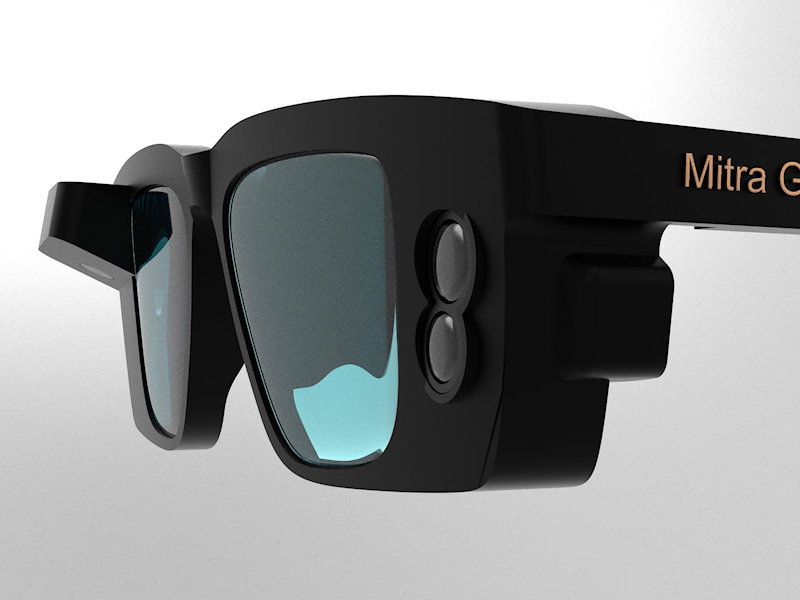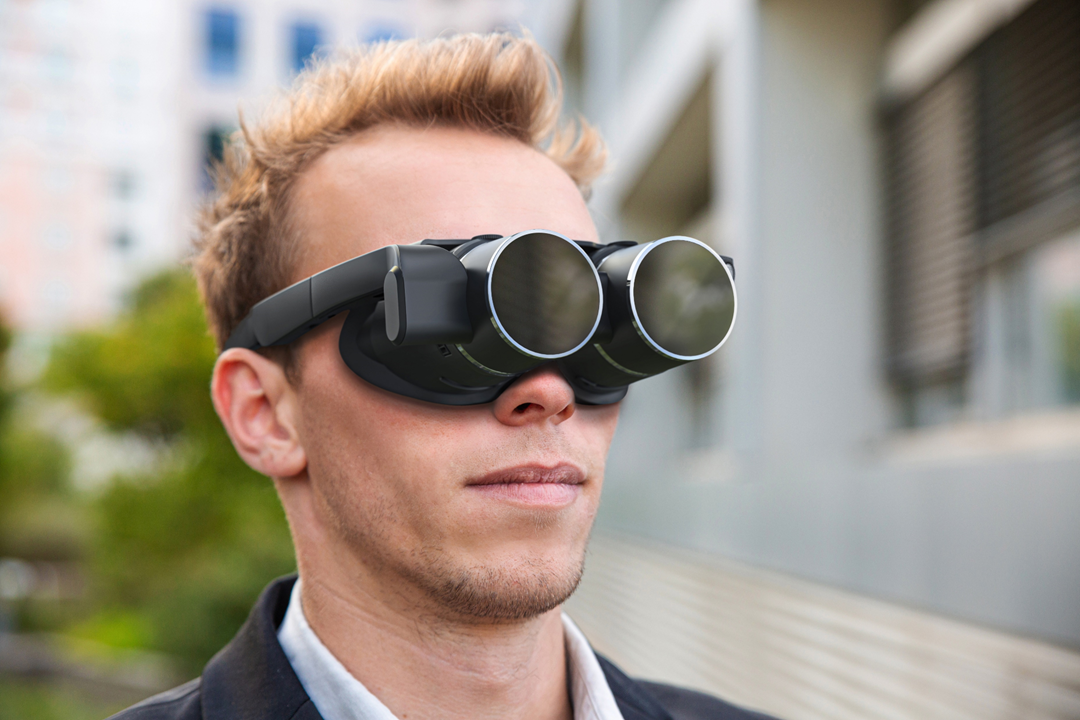Wearable Technology for Low Vision: Transforming How We Navigate the World
Wearable Technology for Low Vision: Transforming How We Navigate the World
Blog Article
Enhancing Availability Through Assistive Technology for the Blind
The combination of assistive innovation for the blind stands for an essential advancement in ease of access, basically changing exactly how individuals navigate their environments and engage with culture. As we check out the diverse types of assistive tools and their substantial effects on everyday living, it comes to be vital to check out just how ongoing technical advancements are improving the landscape of assistance for the blind community.
Summary of Assistive Innovation
Assistive innovation describes a range of gadgets and software program created to boost the capacities of people with disabilities, including those who are blind or visually impaired. This modern technology plays a critical function in advertising freedom and enhancing the top quality of life for users. By providing alternative techniques for accessing information and performing day-to-day jobs, assistive technology equips individuals to browse their settings better.
The development and application of assistive modern technology embrace a selection of concepts focused on promoting accessibility. These principles consist of user-centered design, which prioritizes the needs and choices of the individual, and the combination of innovation into everyday tasks. Such developments ensure that assistive devices are not just practical however additionally user-friendly and simple to utilize.
In addition, assistive innovation includes a diverse spectrum of services, from low-tech choices like magnifiers to state-of-the-art advancements such as display visitors and Braille display screens. The ongoing development of this area is driven by the need to attend to the distinct difficulties faced by people with visual disabilities (Wearable technology for low vision). As innovation continues to advancement, the capacity for improving access and advertising inclusivity stays encouraging, eventually adding to a much more fair culture

Kinds of Assistive Gadgets
Many kinds of assistive tools are available to sustain people that are blind or aesthetically impaired, each created to deal with specific requirements and difficulties. These gadgets can be extensively categorized right into 3 main types: low-tech, mid-tech, and modern options.
Low-tech devices consist of things such as magnifiers, Braille labels, and responsive maps. These are fairly straightforward tools that improve the individual's ability to communicate with their atmosphere without calling for complicated modern technology.
Mid-tech tools usually involve advanced functions, such as digital magnifiers and portable Braille note-takers. These devices can offer capabilities like speech outcome, permitting users to gain access to info extra effectively.

Effect on Daily Living
The availability of various assistive devices substantially boosts the lifestyle for individuals who are blind or aesthetically impaired, affecting their day-to-day living in profound methods. By incorporating innovations such as display visitors, Braille displays, and audio description services right into their routines, users gain higher autonomy and self-reliance. These devices facilitate accessibility to information, making it possible for people to carry out daily jobs, such as checking out e-mails, browsing public spaces, and delighting in media web content.
Moreover, assistive gadgets empower individuals to involve more totally in social communications and area activities. The ability to use mobile phones furnished with accessibility features enables seamless interaction and link with others. This connectivity fosters a sense of belonging and lowers feelings of seclusion.
In specialist setups, assistive innovation sustains productivity by allowing people to total job tasks successfully. Devices like voice recognition software program and specialized magnifying gadgets make it possible for users to get involved in the labor force on equivalent footing with their sighted peers.

Advancements in Modern Technology
Current technical improvements have actually dramatically transformed the landscape of tools readily available for individuals that are visually damaged or blind. The integration of artificial knowledge (AI) and equipment learning has generated applications that enhance navigation and item acknowledgment. As an example, smart device applications can now make use of AI to recognize and explain environments in real-time, supplying customers with valuable contextual info.
Furthermore, innovations in haptic technology have actually brought about the advancement of clever walking sticks outfitted with sensing units that discover obstacles and provide tactile comments. This equips users to navigate their atmosphere with raised confidence and independence. Furthermore, developments in text-to-speech software application and braille display screens have actually improved the ease of access of digital web content, enabling seamless interaction with different media.
Wearable technologies, such as smart glasses, are also making strides in helping aesthetic impairment. These gadgets can supply enhanced truth experiences, superimposing crucial details onto the customer's field of vision. Jointly, these advancements not just enhance the lifestyle for people that are blind however additionally promote greater incorporation in culture. As technology continues to advance, the possibility for much more transformative tools stays imminent.
Future Trends and Innovations
As innovation quickly progresses, the future of assistive devices for people who are blind holds immense assurance. Advancements in man-made knowledge (AI) and machine learning are positioned to revolutionize the way blind users connect with their atmospheres. As an example, AI-driven applications are being created to improve item recognition, enabling users to recognize and navigate their environments with better simplicity and accuracy.
Furthermore, innovations in haptic feedback modern technology are enabling the development of tactile maps and navigating help that supply real-time info with touch. These advancements not just improve wheelchair but also foster independence. Furthermore, wearable devices equipped with increased reality (AR) functions are emerging, offering individuals aesthetic information via audio descriptions, therefore connecting the void in between the digital and physical worlds.
Furthermore, the integration of clever home modern technology presents brand-new possibilities for ease of access, enabling individuals to Speech-to-text devices for low vision control their living atmospheres through voice commands or mobile phone applications. As cooperation in between technology designers and the blind neighborhood continues, the emphasis on user-centered layout will ensure that future developments are tailored to fulfill the one-of-a-kind requirements of this population (Wearable technology for low vision). The trajectory of assistive modern technology assures a more comprehensive and empowering future for people that are blind
Verdict
To conclude, assistive technology plays a critical role in boosting access for individuals with aesthetic disabilities. The diverse selection of devices, including display viewers and wise walking canes, considerably enhances day-to-day living and promotes independence. Continual developments in innovation and user-centered style make certain that these tools cater successfully to the distinct needs of the blind neighborhood. As technologies progress, increased inclusivity and empowerment can be prepared for, ultimately enhancing the quality of life for those influenced by visual impairments.
The assimilation of assistive technology for the blind stands for a pivotal improvement in availability, essentially modifying just how individuals browse their atmospheres and involve with culture.Assistive innovation refers to a range of devices and software made to improve the capacities of individuals with handicaps, including those that are blind or visually impaired. Wearable technology for low vision.As modern technology swiftly progresses, the future of assistive devices for individuals who are blind holds enormous pledge. The trajectory of assistive innovation promises an extra empowering and comprehensive future for people that are blind
In conclusion, assistive technology plays an important function in boosting accessibility for individuals with aesthetic disabilities.
Report this page